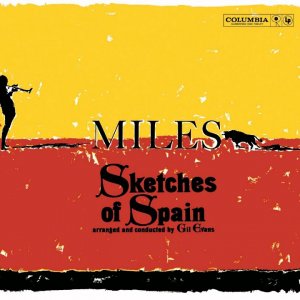Just giving some historical perspective. i am not trying to make a specific point, just sharing information because within the context of Pan-Africanism i did not see any threads dealing specifically with this location.
however, i will share the following, which is based on several sources.
Ancient Azania
Pliny the Elder mentions an "Azanian Sea" (N.H. 6.34) that began around the emporium of Adulis and stretched around the south coast of Africa. The slightly later Periplus of the Erythraean Sea offers more details about Azania (chapters 15,16,18). From chapter 15 of the Periplus,
Huntingford identifies Azania proper with the area south of modern day Somalia (the "Lesser and Greater Bluffs", the "Lesser and Greater Strands", and the "Seven Courses").[2] However,
chapter 16 clearly describes Rhapta, located south of the Puralean Islands at the end of the Seven Courses of Azania, as the "southernmost market of Azania." Modern identifications of Rhapta place it on the coasts of modern-day Tanzania -- indicating that Azania referred to perhaps an area identical to the later Arab Zanj. Professor Chami has found archaeological evidence indicating that Rhapta was probably located near the mouth of the Rufiji River.
Azania was known to the Chinese as 澤散 Zésàn by the 3rd century CE.[3]
Later writers who mention Azania include Claudius Ptolemy and Cosmas Indicopleustes. Cosmas records the fact that in his time
Azania was under the control of Axum, and that gold was bartered for butchered beef.
Observations
The Chinese maritime trade was known to have extended in the first century B.C.
By the third century C.E. this area was known to the Chinese as Zesan.
The "Azanian Sea" is what is now referenced as the "Red Sea".
Azania proper was located in area of modern Somalia, which was referred to some as Puntland, or the Land of Punt (i.e. Puanit).
Azania was at one time under the control of Axum and its extent was from "Adulis around the south coast of Africa.
Rhapta:"Ancient trading port in east Africa, possibly in the Rufiji delta or Zanzibar channel, that is mentioned by Greco-Roman writers of the early centuries AD. It exported ivory, tortoiseshell and coconut oil, and
imported weapons and iron tools from the Mediterranean."
According to another source,
The ancient Periplus of the Erythraean SeaPeriplus of the Erythraean SeaThe Periplus of the Erythraean Sea is a Greek periplus, describing navigation and trading opportunities from Roman Egyptian ports like Berenice along the coast of the Red Sea, and others along Northeast Africa and India...
described Rhapta as "the last marketplace of Azania. Azania is the name that has been applied to various parts of sub-Saharan Africa. In Roman times -- and perhaps earlier -- the name referred to a portion of the Southeast African coast south of the Horn of Africa, extending south perhaps as far as modern Tanzania...
According to Claudius Ptolemy, Diogenes, a merchant on the south, the Arabian Sea on the west, and the Bay of Bengal...
n trade, was blown off course from his usual route from India, and after travelling 25 days south along the African coast arrived at Rhapta, located where the river of the same name enters the Indian Ocean opposite the island of Menouthis. Diogenes further describes this river as having its source near the Mountains of the Mountains of the Moon (Africa)The term Mountains of the Moon or Montes Lunae referred to a mountain range in central Africa that was long believed to be the source of the White Nile, but whose actual location was—and remains—uncertain.- Ancient testimony :...
, near the swamp whence the Nile is a major north-flowing river in Africa, generally regarded as the longest river in the world....
was said to also have its source.
http://www.absoluteastronomy.com/topics/Rhapta
The trade established here was not the so-called "Silk Road" but the "Cinnamon Route"
http://asiapacificuniverse.com/pkm/spiceroutes.htm
This trade was an extension of the trade that occured between Alexandria and China as early as 250 B.C.
http://nabataea.net/msroute.html
In reference to this extention from ADULIS, it is generally postulated that AXUM civilization went only in an eastern direction while this southern extention is typically denied in modern history, or completely ignored.
Another source illustrates the antiquity of this trade, going further back to the reign of Queen Hatshepsut.
"As we have seen,
the bulk of the trade in spices and silks between China and India was carried in the great ships of the Nanyue and Kunlun peoples. There was, however, a third major group of maritime traders who plied the waters of the South China Sea, and these were the Indonesians."
http://www.chinese-unicorn.com/qilin/book/contents/20-the-cinnamon-route/
This also established a connection not only with the Indonesians, but the Polynesians as well.
"It was in these that the Polynesians also sailed eastwards as far afield as Hawaii (a corruption of ‘Java’),
Easter Island, and New Zealand, distances of over 4,000 miles. In the Pacific there were intermediate islands. In the Indian Ocean the voyage was over a stretch of virtually open sea, or some 4,500 miles."
It was the Indonesians who engaged in transoceanic voyages between Asia and the Americas in ancient times and...
"Only the Indonesians had the knowledge and expertise to expedite this trade, for they were the great long‑distance runners of the sea. In fact, there is now undisputed biological evidence to prove the existence of transoceanic voyages between Asia and the Americas in ancient times,
including the introduction of coca (Erythroxylon sp.) from South America into Egypt as early as 1000 B.C.E. (Sorenson and Johannesssen, 2006)."
This involved a connection to the Island that is currently known as Madagascar,
"The Indonesians, incredible as it may seem, packed the gui from south China in their huge ocean‑going sangarra (outrigger canoes), and making use of the monsoon winds, sailed 4,500 miles directly across the southern Indian Ocean to the island of Madagascar off the north‑eastern coast of Africa (map 11)."
From Madagascar the spice reached the important entrepot of Rhapta, on the coast of present‑day Somalia, and from there it was transshipped northward up the Red Sea by southern Arabian merchants from Muza in Yemen, who controlled the coastal trade in cinnamon. This Arab monopoly was the main reason why the true source of Chinese gui remained hidden for so long.
This brings us to the location where this trade was based in the Sudan:
JUBA
In 19th century, a trading post and a mission named Gondokoro was located in the vicinity of Juba. It was the southernmost outpost of the Turkish garisson, supported by a handful of soldiers, mostly ill due to the malaria and blackwater fever that was dominant in the region.
Gondokoro was also the base of the explorer and anti-slavery campaigner Samuel Baker during his expeditions to what is now Southern Sudan and northern Uganda from 1863 to 1865, and from 1871 to 1873[2].
Juba was also an area located in Zanzibar.
The word Zanzibar is a modification of Zanguebar or Zinguebar, the name given by Portuguese traders to that part of the mainland of Africa between the river Juba and Cape Delgado, which is inhabited by the indigenous negro race. It is derived from Zing, the old Arabic name of the E. African negroes, and bar, the Persian or Indian word for country.
Mining and the trade for gold was central to this trade network, and the early Phoenicians were also involved in this respect, specifically in the trade of copper and silver.
That the Phœnicians conducted mining operations in Thasos we know from
Herodotus,[9] and from other writers of repute[10] we learn that they
extended these operations to the mainland opposite. Herodotus had
himself visited Thasos, and tells us that the mines were on the
eastern coast of the island, between two places which he calls
respectively Ænyra and Cœnyra. The metal sought was gold, and in their
quest of it the Phœnicians had, he says, turned an entire mountain
topsy-turvy. Here again no modern researches seem to have been made,
and nothing more is known than that at present the natives obtain no
gold from their soil, do not seek for it, and are even ignorant that
their island was ever a gold-producing region.[11] The case is almost
the same on the opposite coast, where in ancient times very rich mines
both of gold and silver abounded,[12] which the Phœnicians are said to
have worked, but where at the present day mining enterprise is almost
at a standstill, and only a very small quantity of silver is
produced.[13]
http://en.wikipedia.org/wiki/Juba,_Sudan
http://www.fullbooks.com/History-of-Phoenicia4.html
Prior to european colonization, much of this area centralized in Somalia, was known:
The Ajuuraan State was a Somali Muslim empire that ruled over large parts of East Africa in the Middle Ages. Through a strong centralized administration and an aggressive military stance towards invaders, the Ajuuraan empire successfully resisted an Oromo invasion from the west and a Portuguese incursion from the east during the Gaal Madow and the Ajuuraan-Portuguese wars. Somali trading routes dating from the ancient and early medieval periods of history were strengthened or re-established, and foreign trade and commerce in the coastal provinces flourished. The Ajuuraans practiced hydraulic engineering and developed new systems for agriculture and taxation, which continued to be used in parts of the Horn of Africa as late as the 19th century. The tyrannical rule of the later Ajuuraan rulers caused multiple rebellions to break out in the empire, and at the end of the 17th century, the Ajuuraan state disintegrated into several successor kingdoms.
As one can see, the history of "Azania" did not develop in isolation. It's a history dating back much farther than most history books will acknowledge and many will deny that it ever existed.






 ... please make yourself at home ...
... please make yourself at home ... 